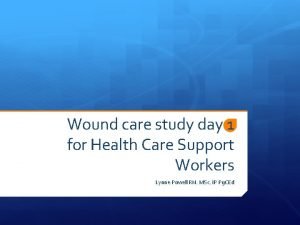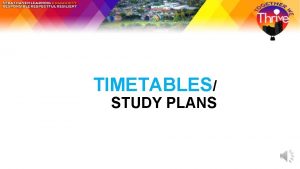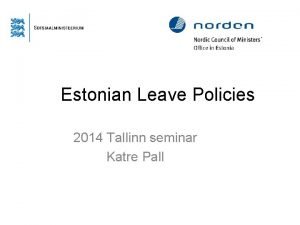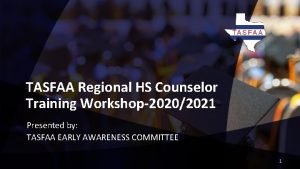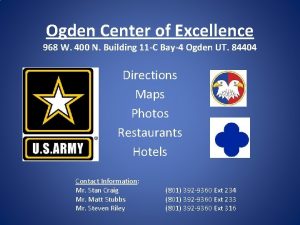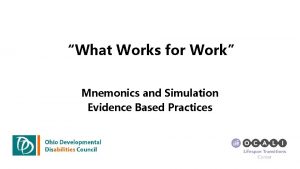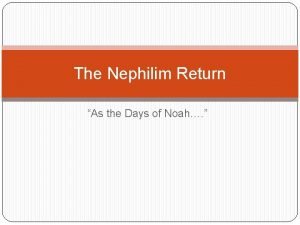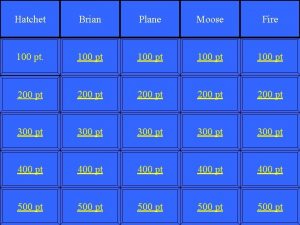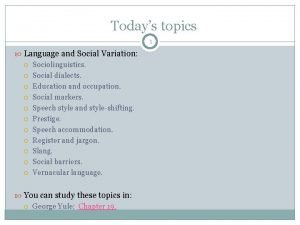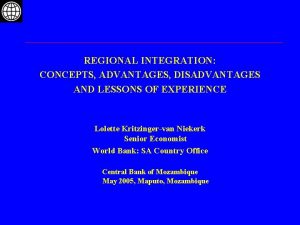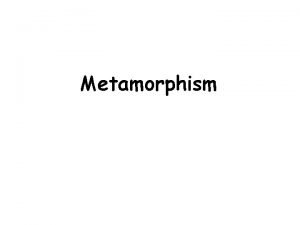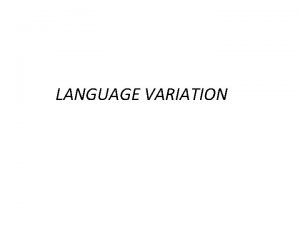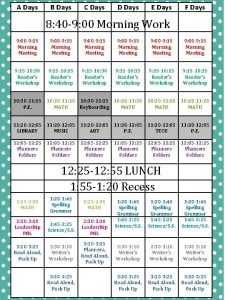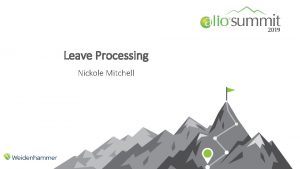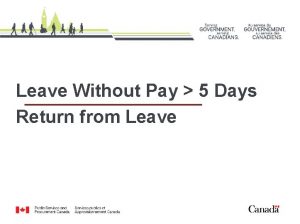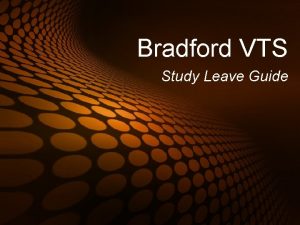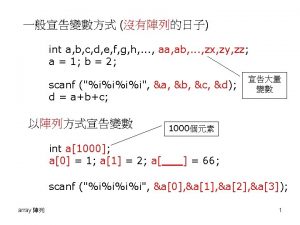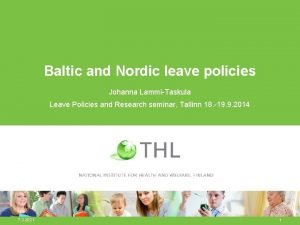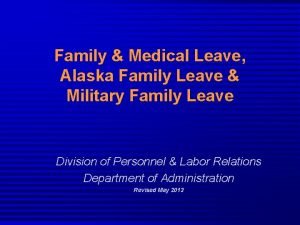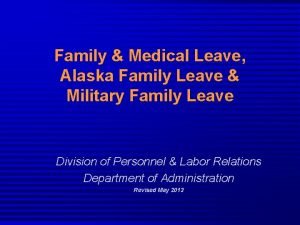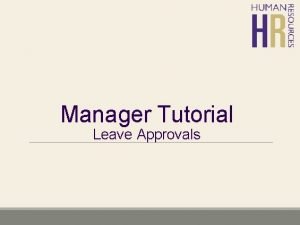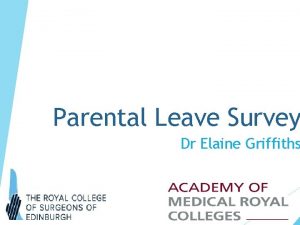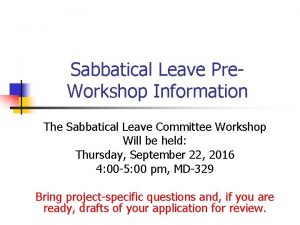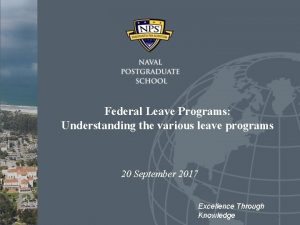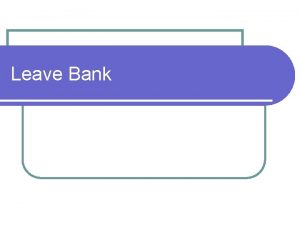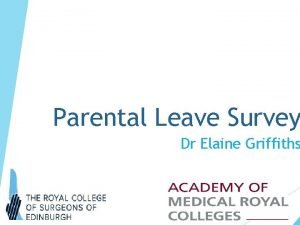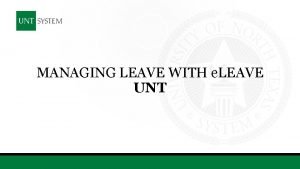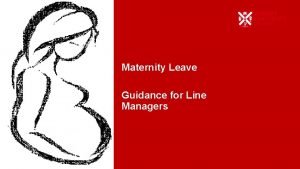Regional Training Days Study Leave and Ultrasond Training


































- Slides: 34

Regional Training Days, Study Leave and Ultrasond Training Miss Melanie Kate Tipples Consultant Gynaecologist WSHT Training Programme Director HEKSS & ATSM Director Melanie. tipples@wsht. nhs. uk

• Regional Training Days • Study Leave • Ultrasound training

Regional Training Days • 13 days over 2 years • Cover topics that cannot be covered easily in the units • Include simulation, leadership and Ultrasound • Delivered in the units throughout HEKSS • Free to attend but you need to provide your own lunch

Regional Training Days

Study Leave • • 30 days a year Additional days for sitting exams LTFT leave calculated pro rata Leave is for trainee which is for educational reasons but not for stat or mandatory training • 860 Pounds a year funding applied for through local trusts

Academic Programme for 2016/17


Basic USS modules for O&G Miss Melanie Kate Tipples Consultant Obstetrician & Gynaecologist 9 OCTOBER 2015

RCOG CURRICULUM

RCOG USS CURRICULUM

RCOG US Training structure ATSM EPAU/ Acute Gynae Basic Modules (2 x) ST 1 -3 Intermediate Modules (3 x) ATSM Fetal Medicine Subspec fetomaternal medicine ST 6 -7

Basic module 2 x • Basic early US module ( 8 -12 weeks) • Basic US assessment of placenta/ liquor volume, presentation, cardiac activity ( fetal biometry is now part of intermediate US curriculum) • Log book • OSATs

Basic modules • mandatory before staring intermediate and advanced US modules • completion of basic US module by end of ST 3 ( trainees starting in 2013) • not imply readiness for independent practice • stepping stone for more advanced supervised ultrasound training

Machine set up and knobology • • • Patient’s details Use obstetric pre-set Chose probe Orientation Size of image Image quality

Probe selection • 3. 5 -5 MHz culvilinear probe • 7. 5 Mz TV • 3 D

Orientation and axial planes • Anterior • Posterior • Right /left

Basic: Early pregnancy (8 -12 weeks) ultrasound The aims: 1. become familiar with machine set up and use of the transabdominal probe (including probe orientation) 2. To gain competence in undertaking a basic ‘dating scan’ using TAS between 8 -12 weeks gestation 3. be aware of what can and cannot be seen using the transabdominal route in early pregnancy.

Basic: Early pregnancy (8 -12 weeks) ultrasound • Trainees are required to gain the TAS competences “under supervision” • gain exposure to, and experience in, use of the TV probe, but TVS competencies are not mandatory • maintain a formal log of on going ultrasound experience once basic competence has been confirmed. ( 3 OSATS per year at least to maintain competency)

Basic: Early pregnancy (8 -12 weeks) ultrasound learning outcomes • ultrasound identification of an intrauterine pregnancy • ultrasound identification of cardiac activity • basic first trimester biometry • referral as required • Be aware of own limitations and competencies • OSATS Trans-abdominal ultrasound examination of early (8 -12 week) pregnancy Completion of basic module form- sign off


Basic: Ultrasound assessment of fetal presentation (size), liquor and the placenta The aims of this module are: 1. become familiar with ideal machine set up and use of the transabdominal probe (including probe orientation) 2. gain basic competences that are potentially useful in day-to-day obstetric practice, including out of hours situations: i. e. lie, presentation, placental site and liquor assessment, assessment cardiac activity (Basic biometry techniques will be taught but competence to the level of ‘independent practice’ is not required)

Basic: Ultrasound assessment of fetal presentation (size), liquor and the placenta • ‘sign off’ is not the completion of training but a ‘springboard’ into experiential learning with maintenance and enhancement of the basic skills • maintain a formal log of on going ultrasound experience once basic competence has been confirmed. • i. e. produce evidence of continuing experience each year

Ultrasound assessment of fetal size, liquor and the placenta - Learning outcomes • basic ultrasound assessment of fetal lie/presentation ( including cardiac activity) • basic assessment of placental location • basic assessment of liquor volume • fetal size under supervision • referral as required

OSATS ( e-porfolio) Trainees should maintain an awareness of the limits of their own competencies OSATS: • 1. Fetal measurement, lie and presentation • 2. Liquor assessment (AFI and maximum pool depth) • 3. Placental assessment. • Completion of basic module form- sign off

Courses • Basic level – Basic Theoretical Ultrasound course Deanery/RCOG KSS ST 1/ST 2 USS STUDY DAY yearly • Intermediate level – RCOG Intermediate USS course

Training resources

E-learning Synapse based emodule basic USS 1 st trimester • Basic knowledge and basic interpretation of ultrasound images to complement practical training • eight chapters • Training videos • Self assessment of knowledge and skills https: //secure. synapse. nhs. uk/ba sic_uss_emodule

E-learning modules Basic USS 8 -12 wks • Chapter 1 - Introduction to Basic USS (RCOG Basic USS Module 1) • Chapter 2 - Consenting for Basic Ultrasound in Early Pregnancy (RCOG Basic USS Module 1) • Chapter 3 - Physics for ultrasound (relevant to RCOG Basic Ultrasound Modules 1 and 2) • Chapter 4 - Ultrasound technique for Trans. Abdominal ultrasound Scanning (TAS) • Chapter 5 - Ultrasound technique for Trans. Vaginal ultrasound Scanning (TVS) • Chapter 6 - Embryology for Early Pregnancy Ultrasound (Module 1) • Chapter 7 - Normal Ultrasound Development in Early Pregnancy (RCOG Basic Ultrasound Module 1) • Chapter 8 - Writing a Report and Communicating Results (RCOG Ultrasound Module 1)

SIMULATORS Blue phantom (CAE healthcare) VIMEDIX Women’s Health Imaging ULTRASIM- Medsim MEDAPHOR TVS MEDAPHOR TAS

Who is who in USS training? • National US training coordinator- Miss Geraldine Masson • Regional/ Deanery US Coordinator. KSS Ultrasound Lead Miss R Hutt SL KSS Intermediate/Advanced EPAU/gynae USS Miss Jackie Ross • Local USS Educational supervisors, scanning consultants, responsible Lead sonographers at local level • KNOW USS educational supervisor in your department

What should I do? • Contact local USS coordinator • Identify available USS session- timetable, ad hoc sessions, special arrangements? • Book Basic theoretical course- deanery study day • Seek other opportunities- LW, DAU, EPAU, out of hours • Friendly sonographers • E-learning • Simulators? • E-PORTFOLIO ASSESSMENTS!

Hospital Ashford & St Peter's Hospitals NHS Trust Royal Sussex County Hospital Brighton Princess Royal Hospital Haywards Heath Local USS coordinator 8 -12 wks Arash Bahmaie Robert Bradley Local USS coordinator Basic 2 nd trimester Arash Bahmaie Robert Bradley Gregory Kalu Queen Elizabeth the Queen Mother Hosp. Graham Ross The William Harvey Hospital Choy Lee Conquest Hospital Hastings Dexter Pascall Frimley Park Hospital Annabel Burhnam Tunbrideg Wells Hospital Sarah Flint Medway Maritime Hospital Helen Watson; Sadoon CT Ranjit Akoloher Royal Surrey County Hospital Chimwemwe Kalumbi East Surrey Hospital Karen Jermy Worthing Hospital St Richard's Hospital Kim Morgan Sarah Flint Renata Hutt Hina Gandhi & Sharmila Sivarajan Rahila Khan Melanie Tipples

In summary • Basic USS modules, compulsory completion by end of ST 3 • Intermediate Modules, voluntarily once basic modules completed and needed prior starting ATSMs • Know your USS trainers in your department? • Get to know sonographers! • Enjoy scanning • WATCH updates and changes in curriculum!!!

 Wound care study days
Wound care study days Study leave timetable
Study leave timetable Katre pall
Katre pall Wmo regional training centres
Wmo regional training centres Tasfaa regional training
Tasfaa regional training Wmo regional training centres
Wmo regional training centres Western regional training center
Western regional training center Work study technique
Work study technique Objective of work study
Objective of work study Differentiate between time study and motion study
Differentiate between time study and motion study What is case series
What is case series Retrospective cohort study vs prospective cohort study
Retrospective cohort study vs prospective cohort study Marty lobdel
Marty lobdel Phytogeography region of india
Phytogeography region of india 30 days has september april june and november
30 days has september april june and november Vocal music of israel and arabia
Vocal music of israel and arabia Days of the week and months of the year
Days of the week and months of the year Ancient of days blessing and honour
Ancient of days blessing and honour Unit 3 celebrations and special days
Unit 3 celebrations and special days Tis all a checkerboard of nights and days
Tis all a checkerboard of nights and days Days pass and the years vanish
Days pass and the years vanish School subjects and days of the week
School subjects and days of the week Unit 4 days and months
Unit 4 days and months 1260 days from today
1260 days from today הנפילים
הנפילים Hatchet moose attack
Hatchet moose attack I fled him down the nights and down the days
I fled him down the nights and down the days Define covert prestige
Define covert prestige Advantages and disadvantages of regional integration
Advantages and disadvantages of regional integration What is regional dialect in sociolinguistics
What is regional dialect in sociolinguistics Anatomy position
Anatomy position Prograde and retrograde metamorphism venn diagram
Prograde and retrograde metamorphism venn diagram Regional variation
Regional variation Language
Language Chelsea adam and eve regional buyer
Chelsea adam and eve regional buyer
